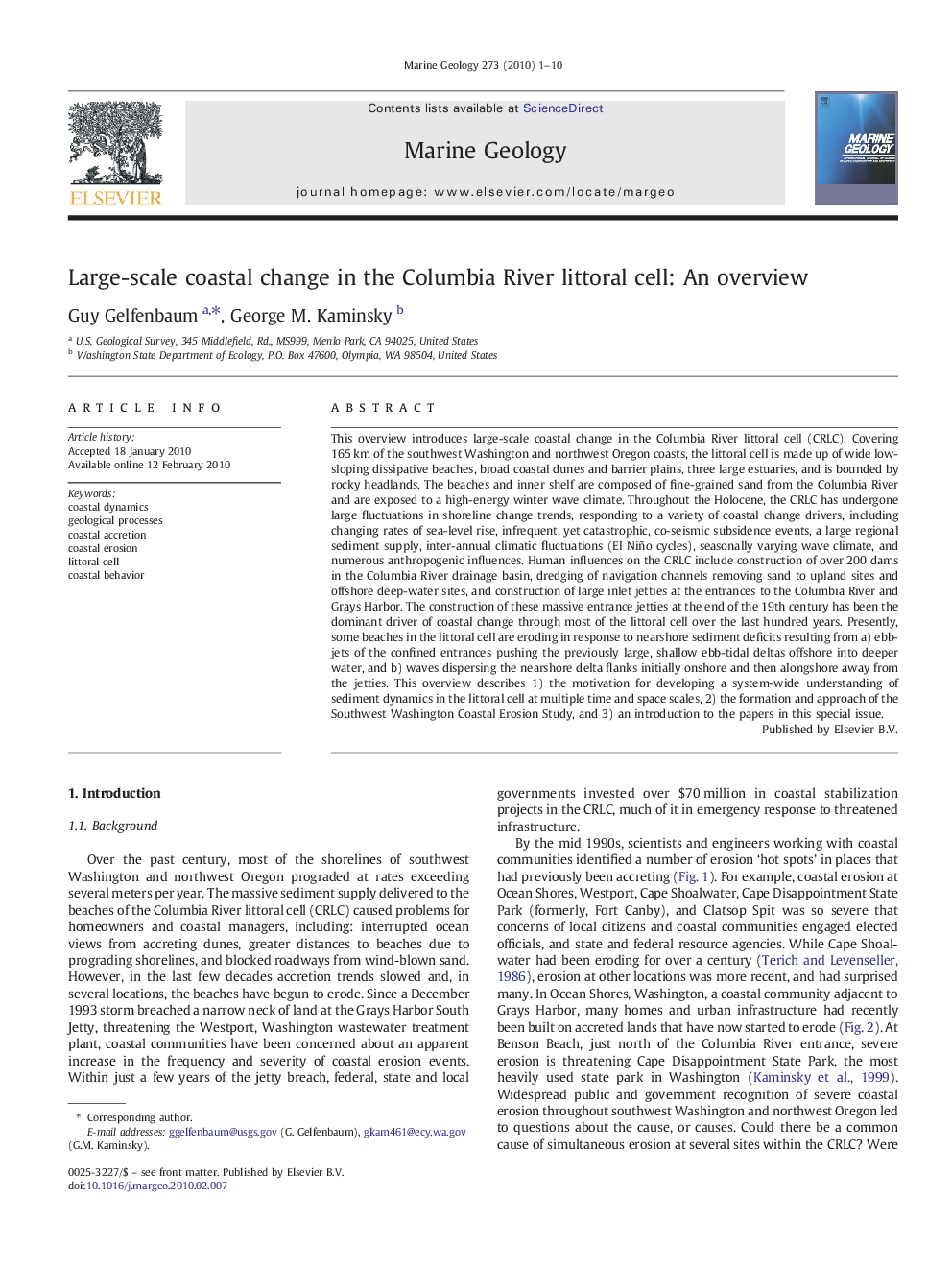| Article ID | Journal | Published Year | Pages | File Type |
|---|---|---|---|---|
| 4718869 | Marine Geology | 2010 | 10 Pages |
This overview introduces large-scale coastal change in the Columbia River littoral cell (CRLC). Covering 165 km of the southwest Washington and northwest Oregon coasts, the littoral cell is made up of wide low-sloping dissipative beaches, broad coastal dunes and barrier plains, three large estuaries, and is bounded by rocky headlands. The beaches and inner shelf are composed of fine-grained sand from the Columbia River and are exposed to a high-energy winter wave climate. Throughout the Holocene, the CRLC has undergone large fluctuations in shoreline change trends, responding to a variety of coastal change drivers, including changing rates of sea-level rise, infrequent, yet catastrophic, co-seismic subsidence events, a large regional sediment supply, inter-annual climatic fluctuations (El Niño cycles), seasonally varying wave climate, and numerous anthropogenic influences. Human influences on the CRLC include construction of over 200 dams in the Columbia River drainage basin, dredging of navigation channels removing sand to upland sites and offshore deep-water sites, and construction of large inlet jetties at the entrances to the Columbia River and Grays Harbor. The construction of these massive entrance jetties at the end of the 19th century has been the dominant driver of coastal change through most of the littoral cell over the last hundred years. Presently, some beaches in the littoral cell are eroding in response to nearshore sediment deficits resulting from a) ebb-jets of the confined entrances pushing the previously large, shallow ebb-tidal deltas offshore into deeper water, and b) waves dispersing the nearshore delta flanks initially onshore and then alongshore away from the jetties. This overview describes 1) the motivation for developing a system-wide understanding of sediment dynamics in the littoral cell at multiple time and space scales, 2) the formation and approach of the Southwest Washington Coastal Erosion Study, and 3) an introduction to the papers in this special issue.
